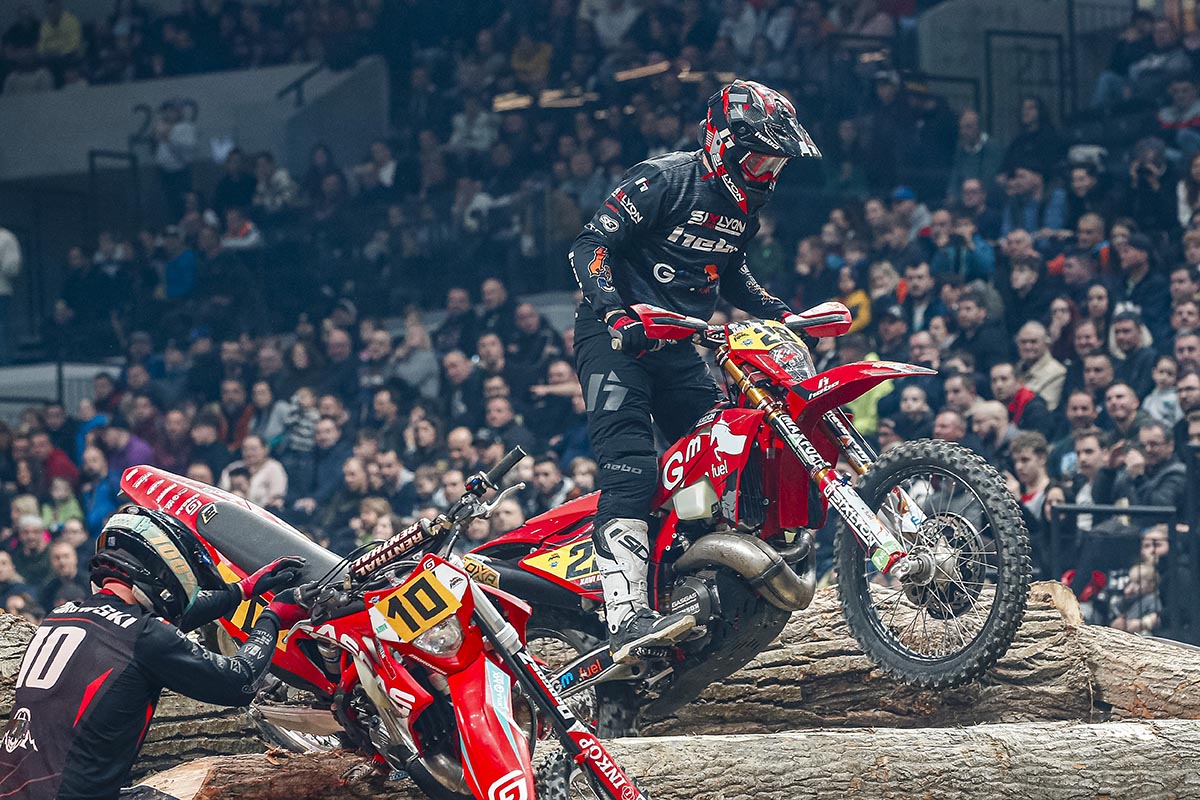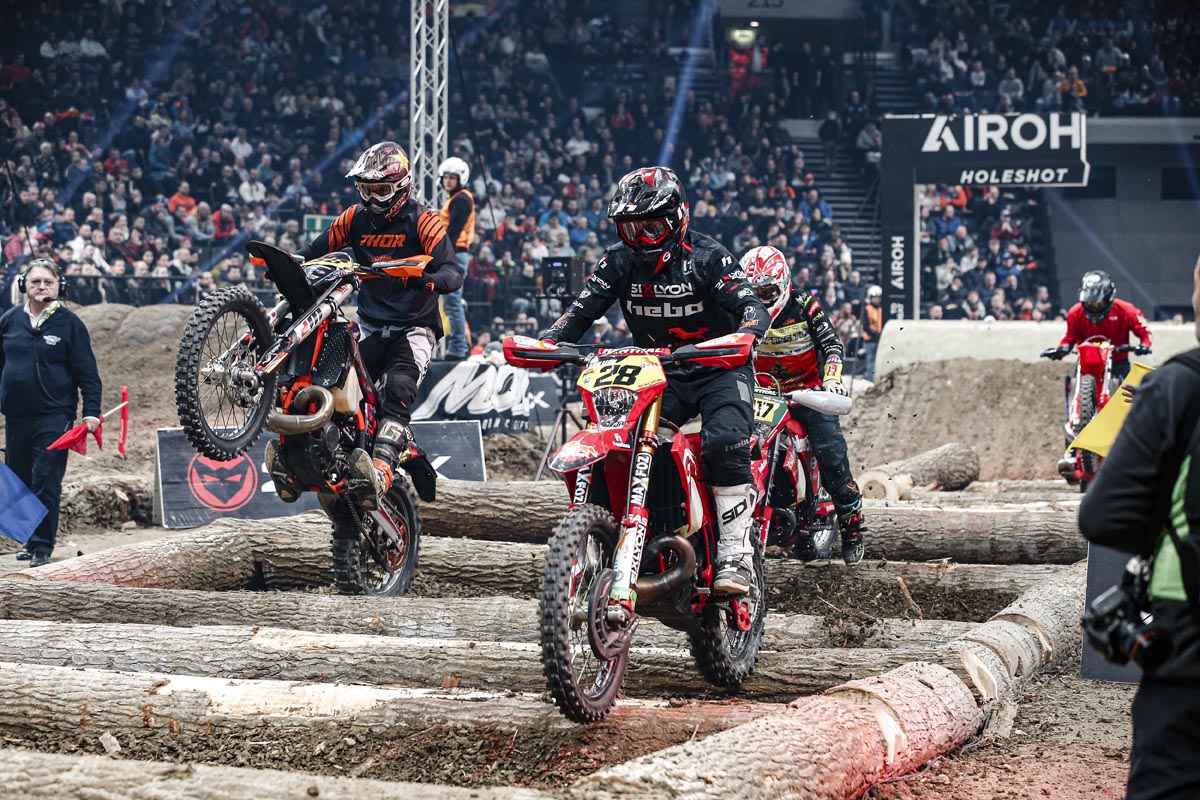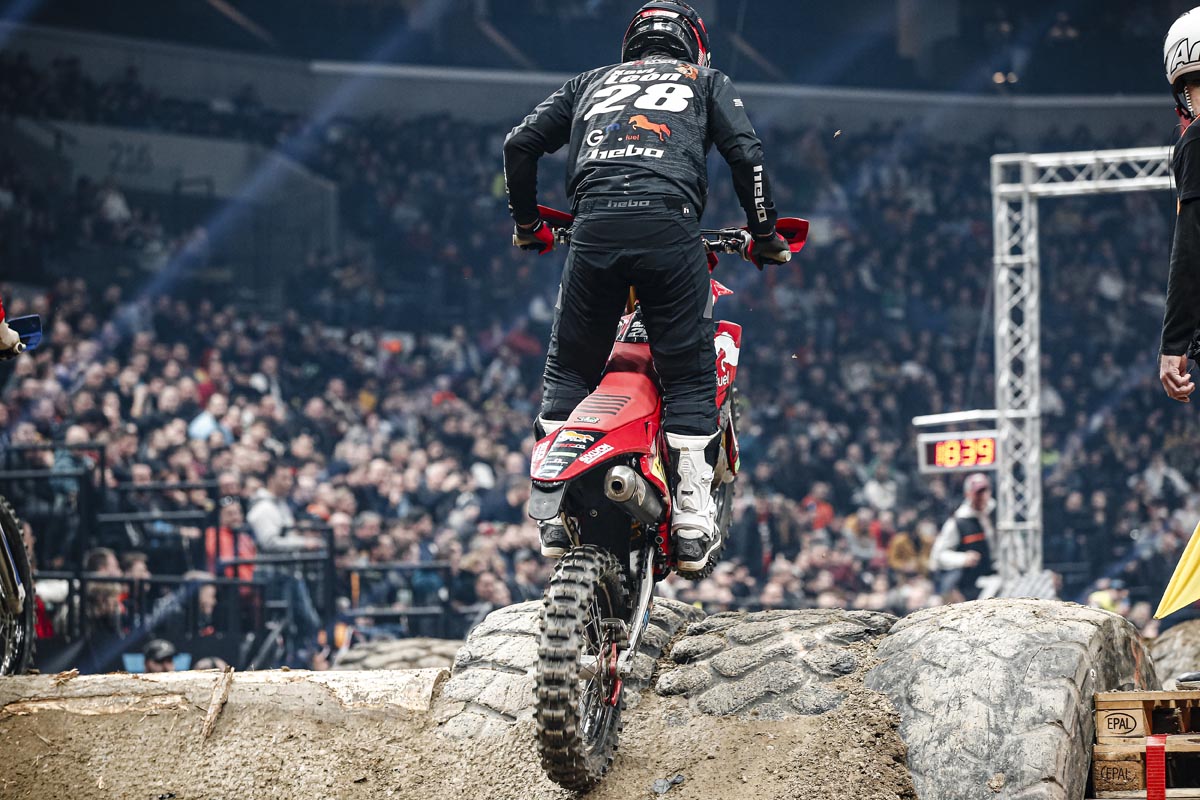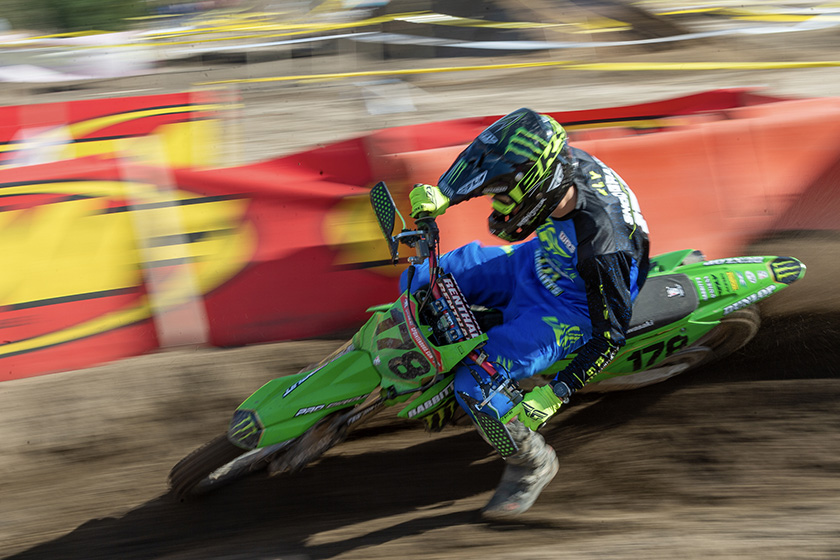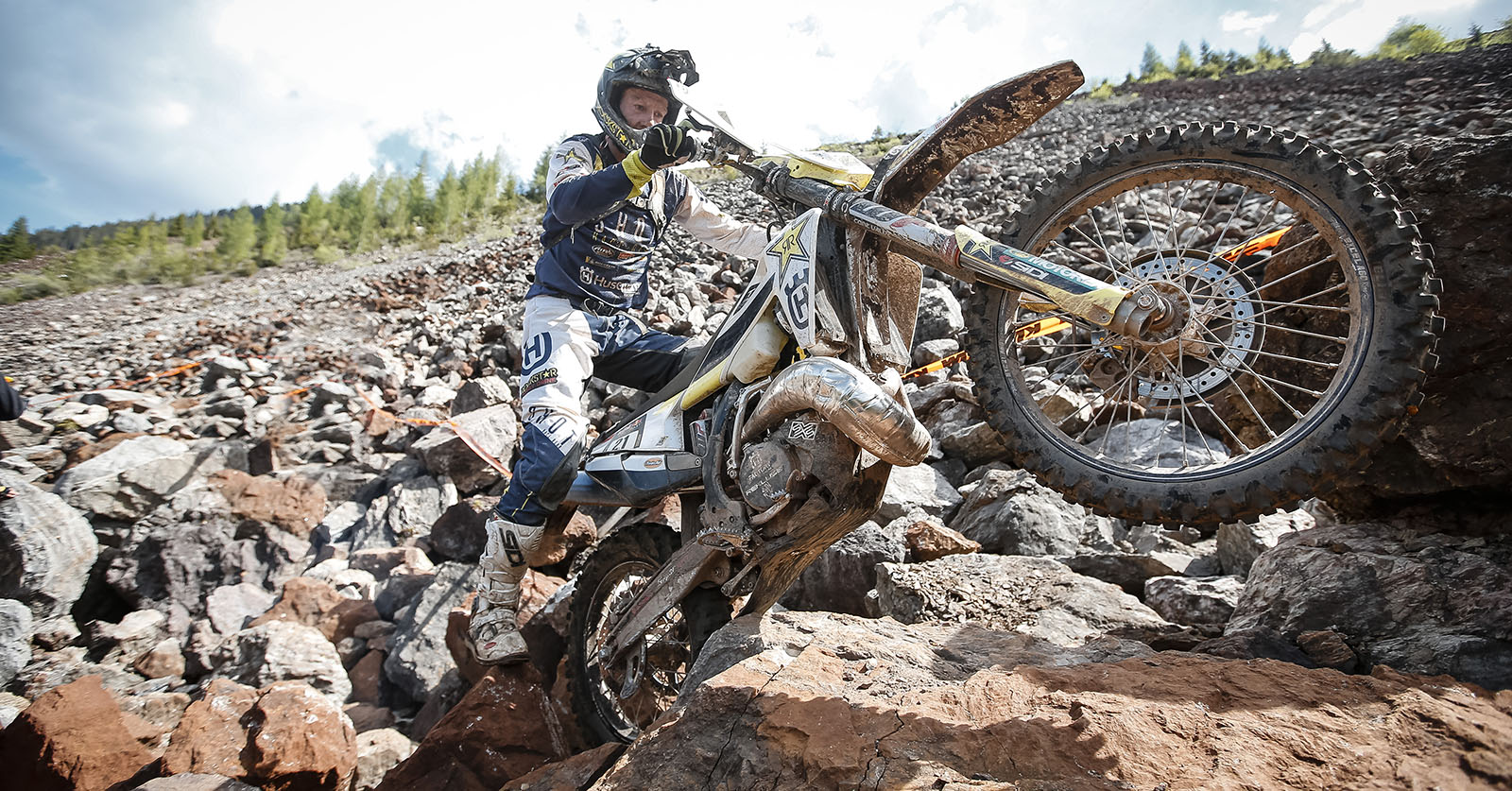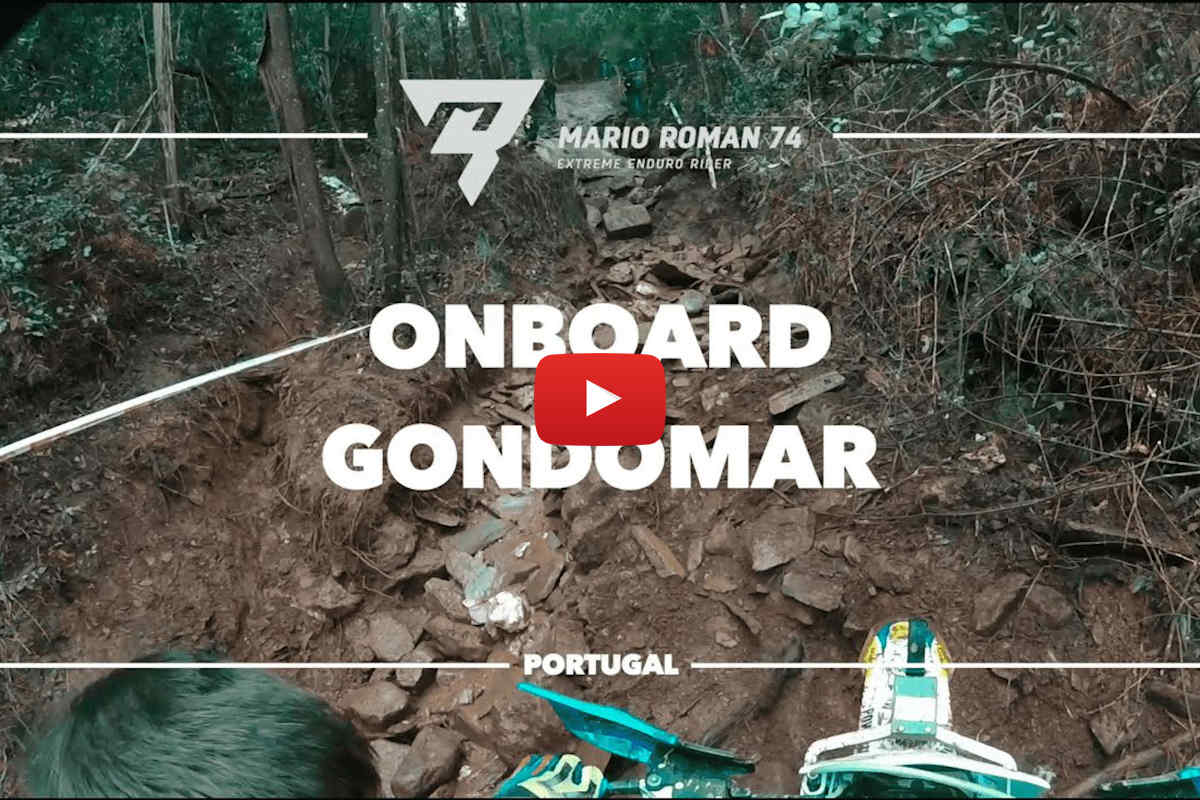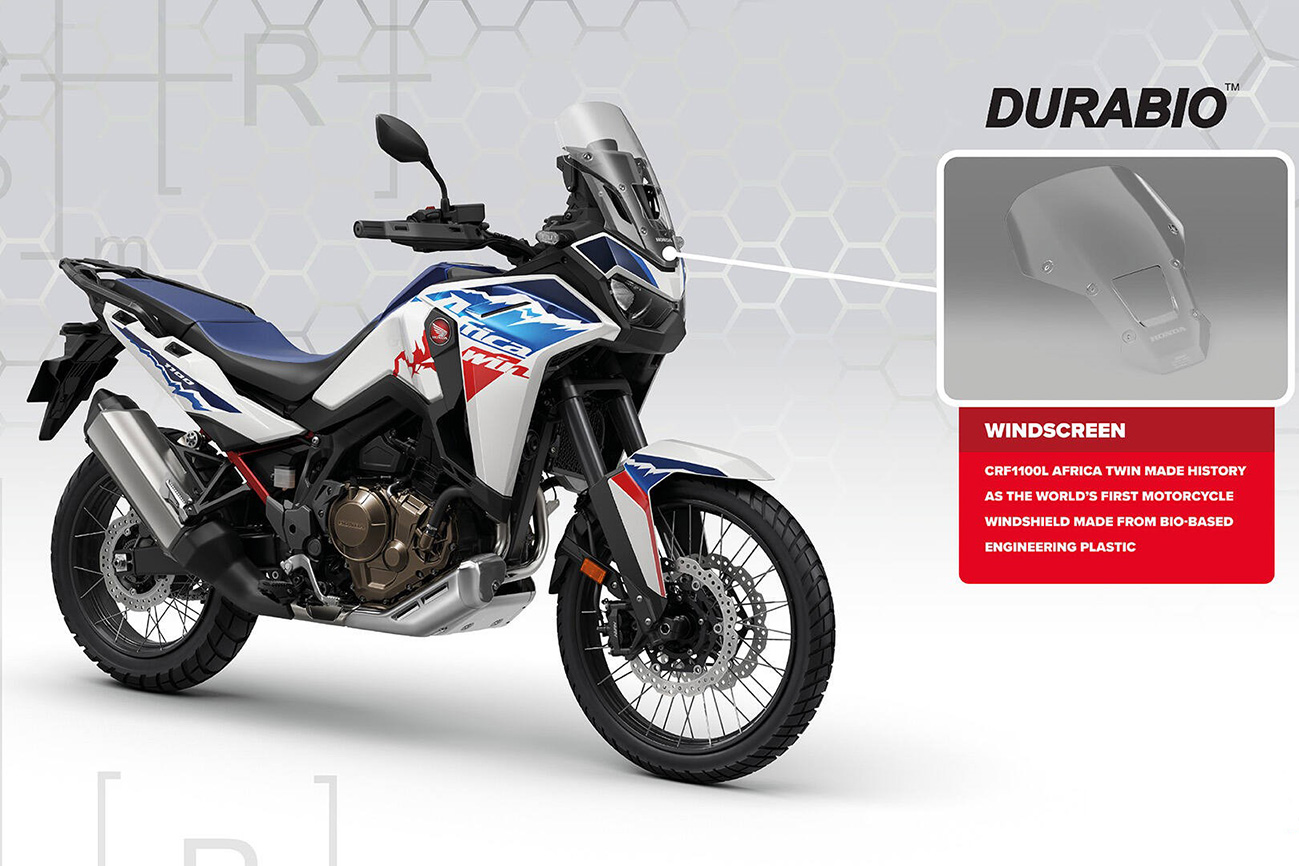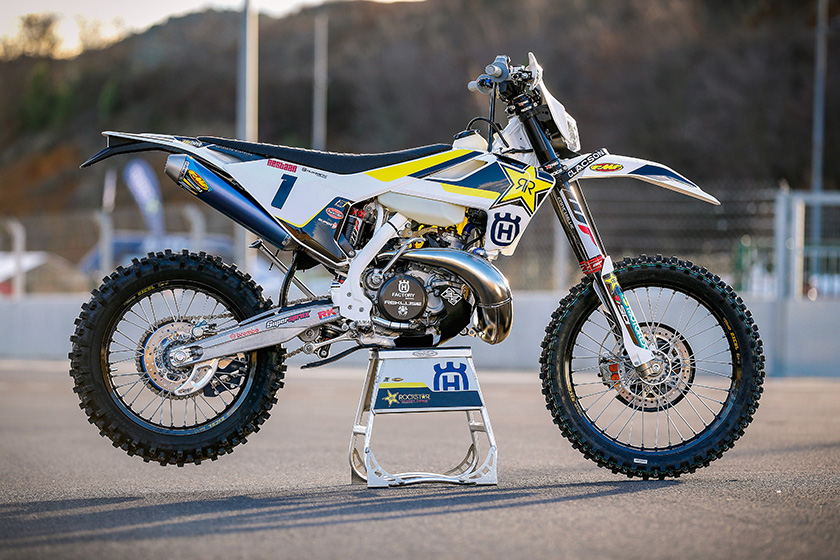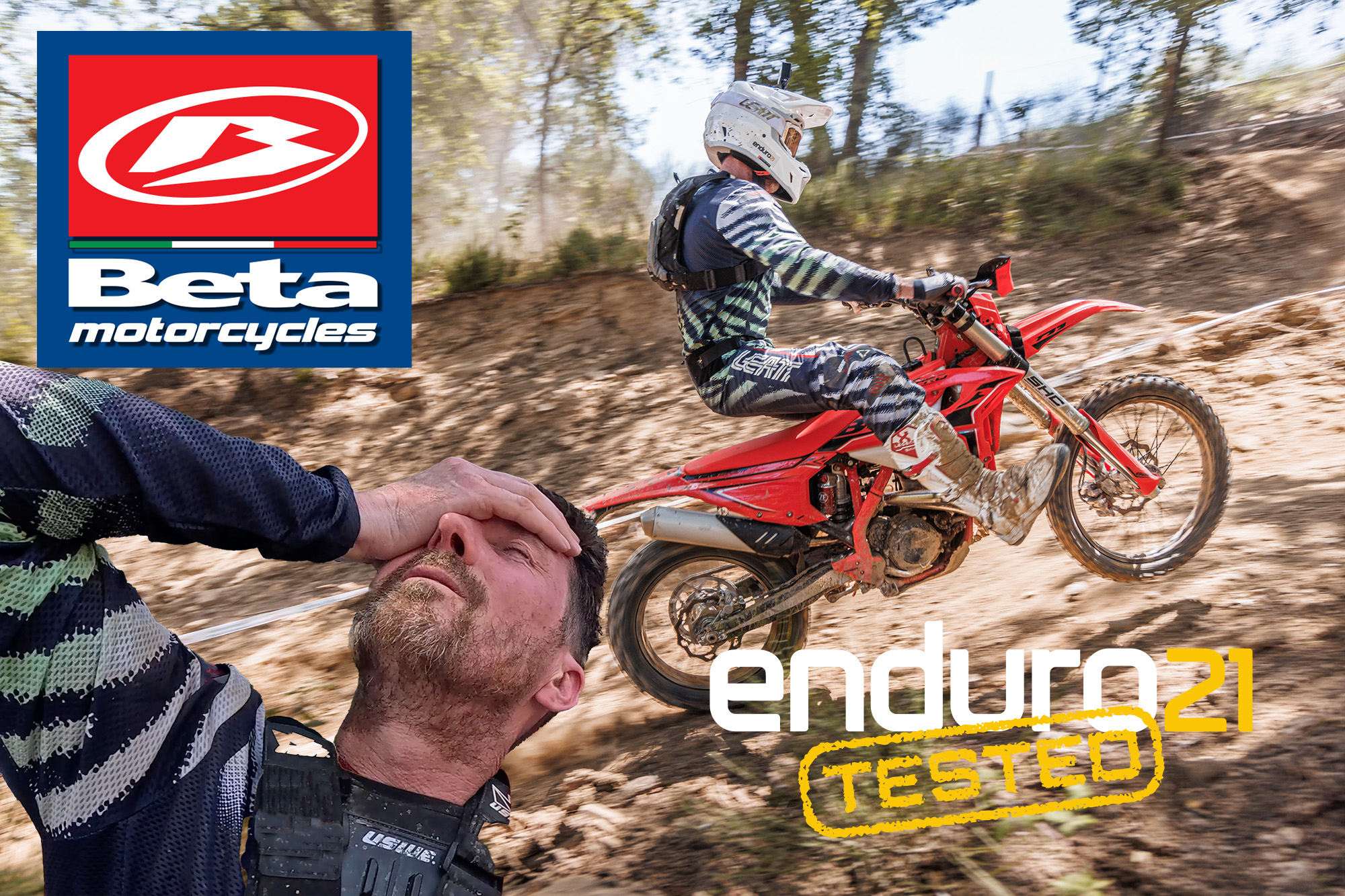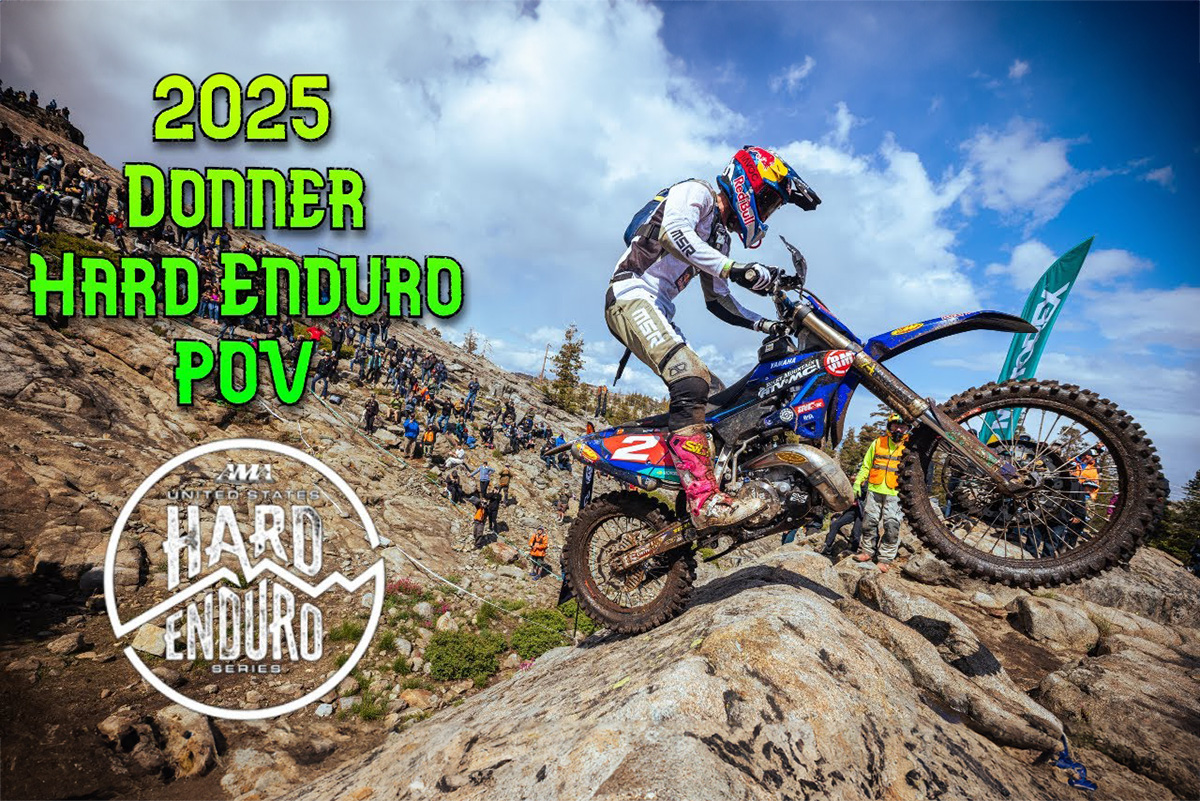5 minutes...Xavi León, European SuperEnduro champion – the 40-year-old “grandpa” beating the 20-somethings
Enduro21 catches five with Xavi León, the GASGAS Sixlyon rider who, at 40-years-old , just beat the 20-somethings to win the 2024 European SuperEnduro Championship and has plenty to say about how our sport has evolved over the years.
For those who don’t know, Xavi Leon was one of the first Spanish riders who took the step into the bright, new world of extreme and hard enduro races when they were new, well over a decade ago.
Coming from trials, his record includes beating Alfredo Gomez and finisher's flag at Erzberg whic puts him in a good position to see how SuperEnduro and Hard Enduro have evolved. After a lifetime on motorcycles, enduro and trial, Xavi ‘Lyon’ go to the taste of the winning champagne once more this month.
Enduro21 caught up with the new European king of SuperEnduro to talk about the season and to look back on how the sport has changed and why the Hard Enduro World Championship isn’t working for the non-professional riders.
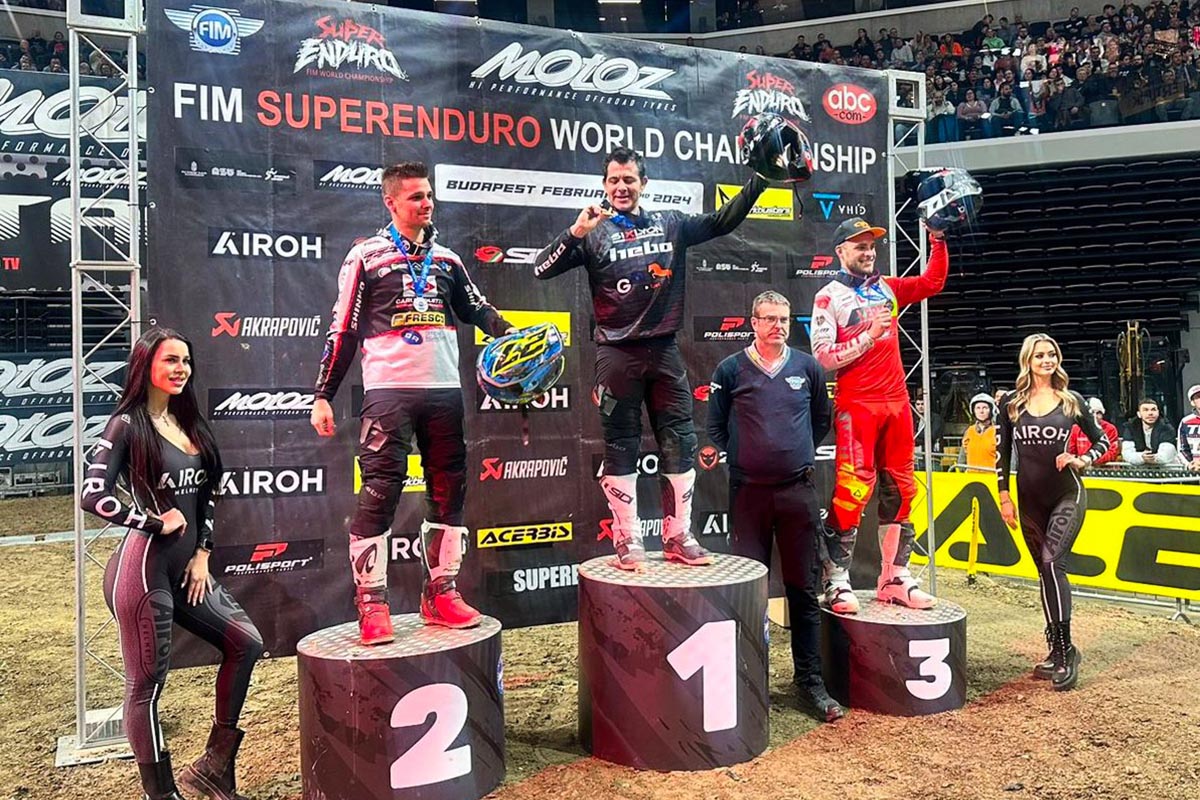
Xavi, European champion at 40!
Xavi León: “I knew I could do well, because I have always been good at SuperEnduro and I like it, but I didn’t expect to win. Although I won almost all the races and the championship was close with drivers who were very strong such as the Italian Alessandro Azzalin, the Polish Maciej Wieckowski or the American Dustin McCarthy, among others. You always have to go out to win. I am super happy.”
Why did you opt for the European Championship and not the World Championship?
“I had already done the SuperEnduro World Championship for three or four years in Prestige class, but it had been three years, since the pandemic, since I had done this. And well, I saw the European championship which, in principle, had three rounds, and is less demanding, and it was fun for me to do it, because my father always liked SuperEnduro. And I just flipped the last coin for him, to see if he could do it all.”
It’s not easy being an amateur rider...
“No, because at the beginning of this year, the European Championship had to have three races. But then they added another one, in Romania, which was not planned on the calendar. And of course, they are all quite close together and very far away for me in Spain: Hungary, Romania, Poland and Germany.
“Apart from that the first one was on January 6, Three Kings’ Day [in Spain] and you don’t feel like it much when you have children. The closest race was 2,000 kilometres from home. And taking the motorcycle with the team, registrations and so on is always expensive, taking into account that there is no aid from the Federation.”
The effort has been worth it? This year you’ve been on the podium every race.
“Yes, I have achieved three victories and a second place, the last in Budapest, where I won the first race and finished second in the next. We tied on points with the winner, after he won the second race and took the GP.
“In Germany, the first test, I was a little weaker than I expected because I hadn’t been able to train SuperEnduro. I was coming from three weeks in Ecuador, where they invited me to run an extreme race. I arrived on a Tuesday and on Thursday I was already flying to Poland with jet lag. I had a bad time, but I managed to win. Then, in the others, I felt much stronger and more confident, and everything was much better. I fought and it turned out well.”
You were one of the first to participate in the Indoor Enduro World Championship when it was created, how has the discipline evolved?
“Well, when everything started at the Palau Sant Jordi in Barcelona, everything was more technical. No one was jumping over obstacles except Taddy [Blazusiak], who made it trendy by jumping and stringing together jumps like it was a Supercross. On the other hand, now everyone jumps everything, any obstacle: logs, stones or whatever... We jump as if they were motocross ramps, really. It looks more like Supercross than technical trials.”
Xavi in Barcelona on an original Gas Gas in 2011
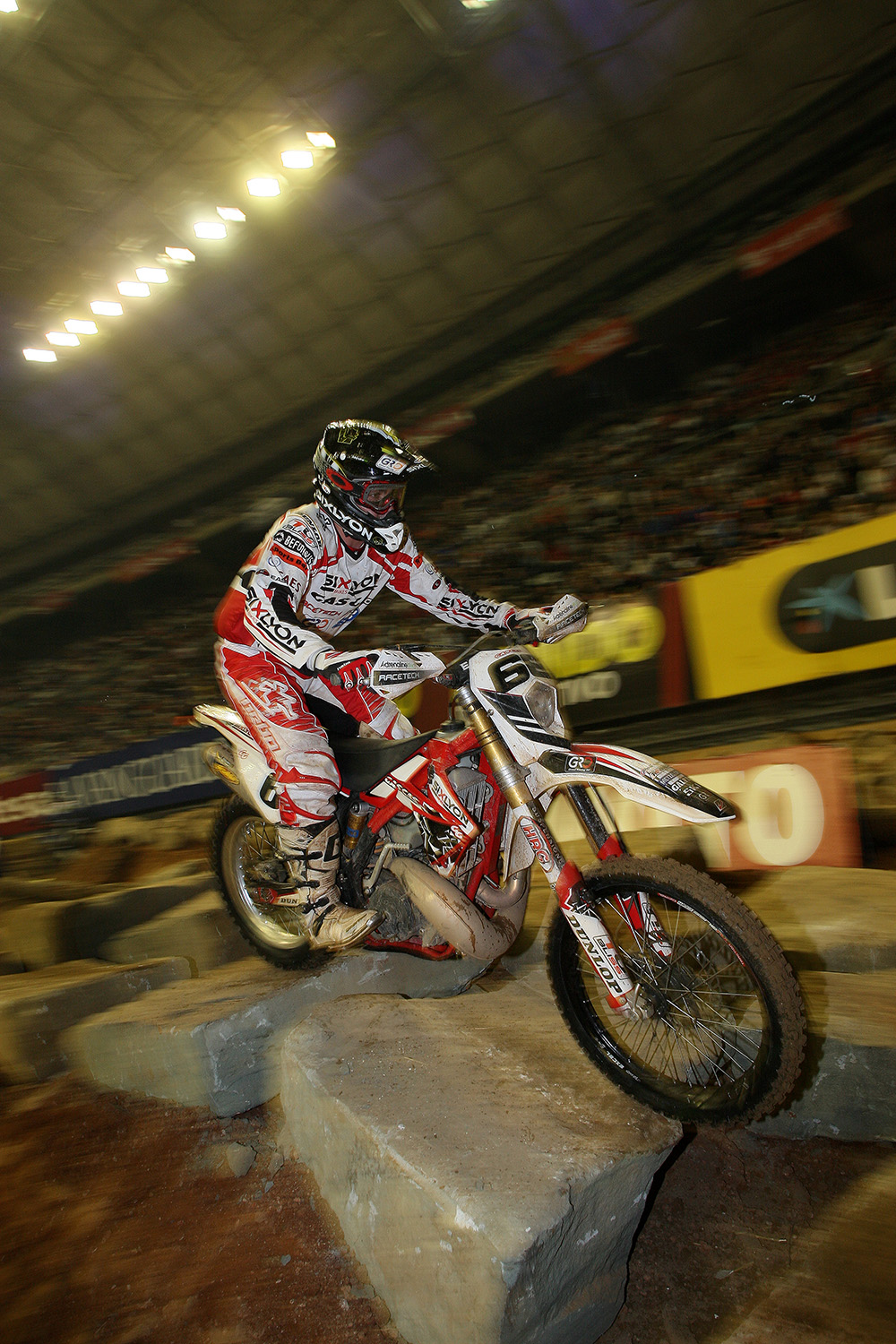
Has SuperEnduro become specialised?
“Yes, the truth is that I remember that, when I started doing the world championships, there were only three events and people didn’t want to risk too much. The stadiums were nowhere near full, unlike now.
“This year, all the stadiums have been full and sold-out a week early. As an example, 17 friends of mine came to Budapest and, a week before, there were no tickets left. I had to move heaven and earth to get them a ticket. It’s really great to be there in the middle of the track running and see the stands full. In Budapest, the stadium was great. It was very cool!”
The European races look enjoyable, with everyone from vets to young riders…
“The European Championship is very good and is always the category with the highest number of entries. In the last race, which was the one with the least, there were 26 of us. But there are always between 30 and 40 registered, although only the 14 best go to the final.”
“I think it is a category for people who are clear that they are not that professional. The top eight are almost always young, semi-professionals, so to speak, guys who train and are very strong, although the Junior category still scares them a little. So, they run the European, since it has fewer tests and the budget is smaller. Instead of three motos on the night you do two, physically you don’t need to be so prepared and you can see if you like this or not.”
What did it feel like to win the European Championship in Budapest?
“I was a little nervous despite the advantage I had at the top of the standings, but I needed to qualify and in SuperEnduro races you never know what can happen. I think by finishing fifth I was already winning, but I was nervous.
“When I qualified, it took a weight off my shoulders because then I just had to do my thing and not fail. I left with extra motivation. I put myself first and managed to win the heat and the championship, it was incredible and we celebrated with all the people who came to see me there. I appreciate them coming there, it was kind of cool. I was very happy.”
Has this title given you strength to continue?
“The problem is that, after winning the European Championship, they don’t let me run next year. I would have to go two years without doing it. Here, I think they should make a category, in my opinion, like TR2 in trials.”
“The organization has invited me to race in Prestige in the GP of Bulgaria and England, I have already raced in this category before. However, now I am no longer physically fit to run in Prestige. Furthermore, everyone is going very strong and to finish eighth, or further back, the truth is that it doesn’t motivate me much. So, next year I can’t run, because I have to go two years without doing it, and now I’m 40 years old.”
The veteran of the category!
"Yes, yes. The oldest rider who raced with me was 26-years-old... can you imagine? (Laughs) All the pilots called me ‘grandpa’.”
Yes, yes... But the ‘grandpa’ has given them a lot of trouble.
“In the first race they thought I was there because my son was running and I told them: my son is only seven years old! We have laughed a lot with all this.”
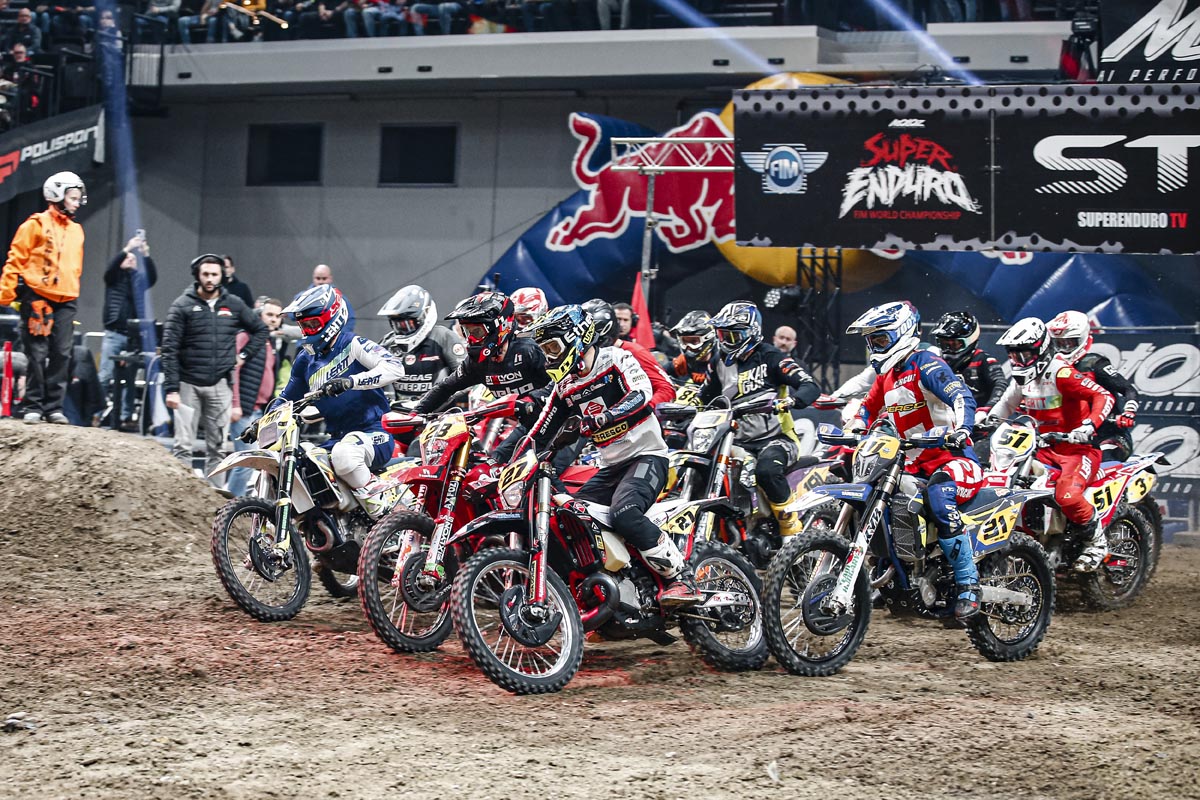
After the race in Romania, the design of the tracks has been in the eye of the storm... what’s your view of the tracks you have raced over the years?
“Every track is different. For example, Hungary was very fast, with motocross-type jumps. On the other hand, in Romania, it was very trials and narrow. The ones from Germany and Poland were also quite good, they were more technical. Half technical and half fast. Normally they are like this, so the driver who wins is the most complete. In general, I like them all, each one has its own thing.”
It can’t be easy to combine work at the Sixlyon store in Sitges with training and racing...
“I have no hours in the day! I start at 9 at the store until 1:45pm, and then I train for an hour, or a little more, have a quick sandwich or snack, and at 4:00pm I pick up my son from school. At 4:30pm I go back to the store until we close, and then I go to the gym.”
“This year I want to do the entire Spanish Hard Enduro Championship,. I am also registered for the Erzbergrodeo. I’ve already done it seven times. I have been a ‘finisher’ three times and it makes me happy to go back there. This year I feel fit and I want to try again. I also want to do Hixpania.”
“The problem I see in the Hard Enduro World Championship is that now it is very, very professional and in the end they are going to run out of people. It’s great that they have six or 10 professional riders, but you can’t start the race on a Wednesday.”
“I have run this type of event all my life and, before, we did the prologue on Friday and ran on Saturday and Sunday. That was fine. Romaniacs are more days, but, as it is in summer, you can combine it with vacations. However, the rest of the races, like Serbia, you have to be there on Tuesday and it is super difficult to do them if you work. Look at this year’s calendar and you’ll see how many riders there will be, just a few.”
Let’s do a ‘flash back’, how did you get into SuperEnduro and HardEnduro?
“I started trialing when I was eight-years-old, until I was 25, when I reached my peak. So I decided to buy an enduro motorcycle and go out and enjoy Sundays. But I got hooked on extremes with the ‘Diabolic Trialera’ organized by Solo Moto and I started doing SuperEnduro and HardEnduro. In Spain then there was almost no one doing that, everyone was shooting for enduro or motocross, and I started racing the Erzbergrodeo and the Lagares, when no one here even knew what they were yet.”
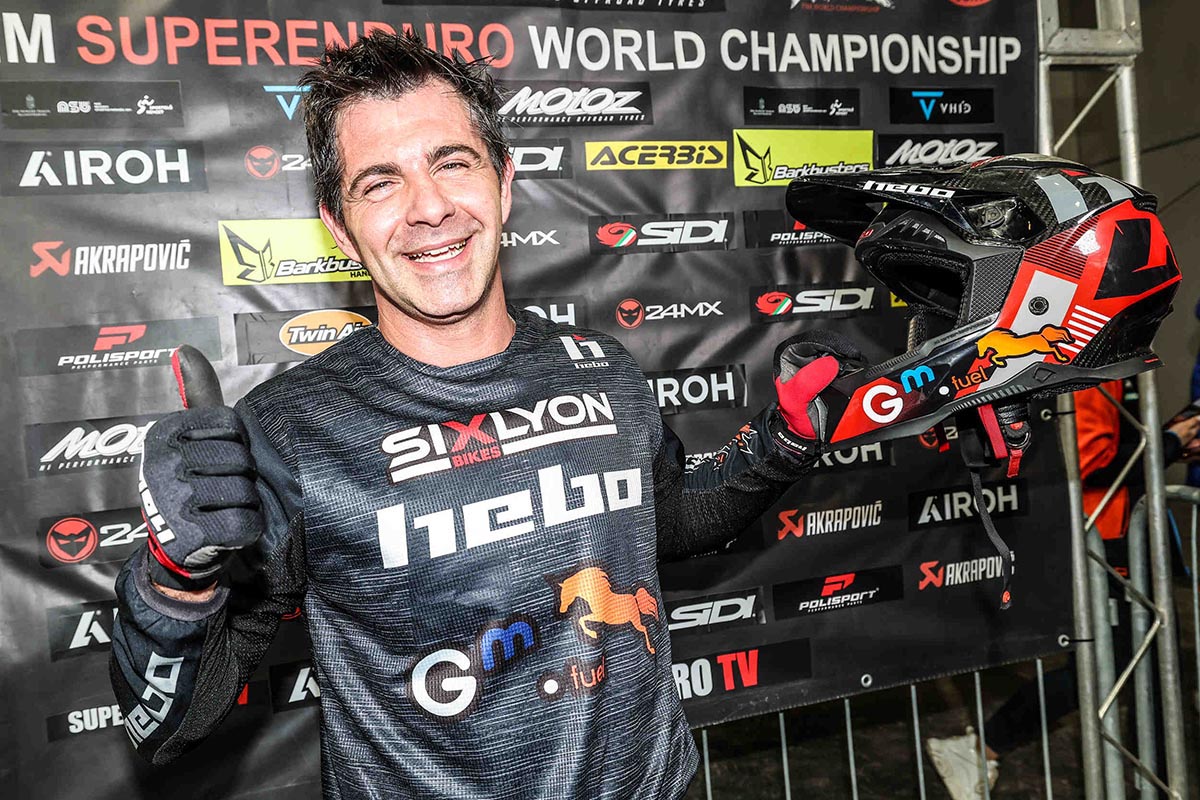
A pioneer you could say...
“Yes, yes. Here it was new, we were self-employed privateers and we went to these races alone. I remember Hell’s Gate, in 2009, it was very hard. We finished at night and then had to drive home!
What else did you win?
“I won the European Hard Enduro in 2016, although almost no one remembers that anymore (laughs). This current title has had more impact than that other one. The championship had five events. I remember there was the Battle of Vikings in Sweden, Valongo in Portugal, Carpathian in Romania, Hell’s Gate in Italy and I think another one in Great Britain [N.R: refers to Bradford-Lees].
“Some of them qualified for the world championship and I ended up winning ahead of Alfredo Gómez. Mario Román also won in 2015, although then social media did not have as much impact as it does now.”
We are curious, where does your team name Sixlyon come from?
“They always ask me that. It doesn’t come from ‘Six Lions’, three are missing (laughs). In the trials paddock, my brother Sergi and I [Xavi] were called the ‘lyons’. So we added the initials S and X with ‘lyon’, the English translation of the surname León, and that’s how it remained."
“Before finishing, I would like to take the opportunity to thank all my sponsors for their support, especially GM Fuel and the others that I wear on my shirt such as Hebo, Maxform and GASGAS Spain, without them I could not have done or won this European Championship.”
Photo Credit: Future7Media & SuperEnduro




